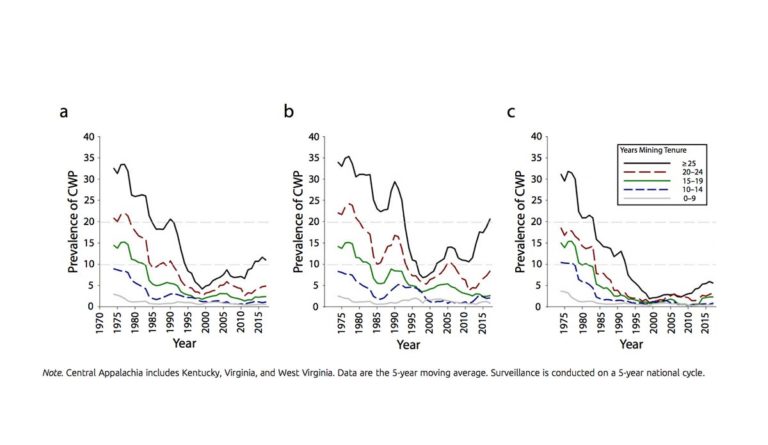Resurgence of Black Lung in Central Appalachia
The Coal Workers’ Health Surveillance Program (CWHSP) was created to identify and stop the progression of black lung in coal miners. However, coal miners in central Appalachia are experiencing a resurgence of black lung.

Read Time: 2 minutes
Published:
Coal workers’ pneumoconiosis or “black lung” develops when dust particles are inhaled while working in coal mines. These particles can cause both inflammation and scarring in the lungs.
In 1969, the Coal Workers’ Health Surveillance Program (CWHSP) was created with the intention of identifying and stopping the progression of black lung in coal miners. The same bill that created the CWHSP also required companies to limit coal miners’ exposure to dust.
Despite these programs and regulations, central Appalachian coal miners are experiencing a resurgence of black lung. A recent study from researchers at the National Institute for Occupational Safety and Health sought to update the prevalence estimates for black lung in the United States.
Graph A above shows the prevalence of black lung throughout the United States. Graph B shows the prevalence of black lung in central Appalachia, and graph C shows the prevalence of black lung in the United States excluding central Appalachia. In this study, central Appalachia included West Virginia, Kentucky, and Virginia.
Throughout the United States, over 10% of coal miners with 25 years or more of tenure have black lung; in central Appalachia, over 20% of miners with the same experience do. The overall prevalence of black lung in long-tenured coal miners is at its highest level in 25 years.
Databyte via David J. Blackley, Cara N. Halldin, A. Scott Laney, Continued Increase in Prevalence of Coal Workers’ Pneumoconiosis in the United States, 1970–2017. American Journal of Public Health (AJPH).



